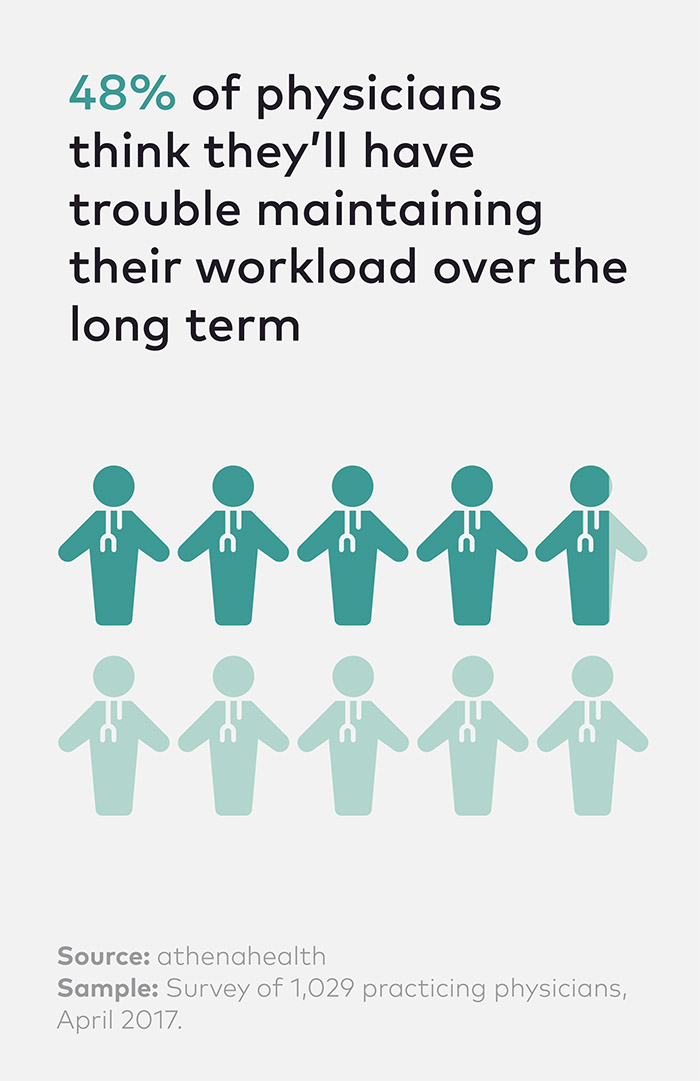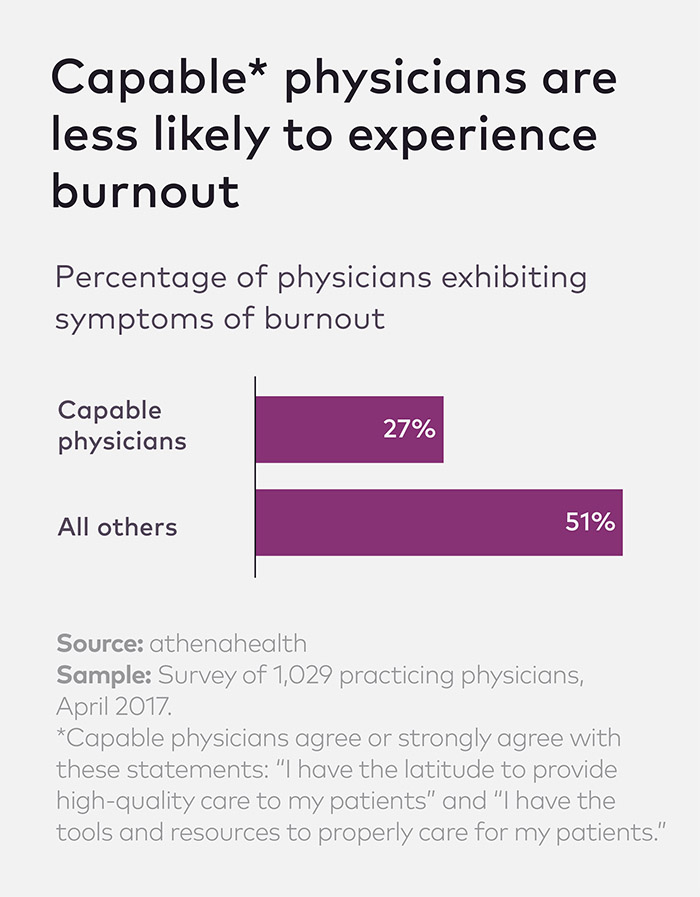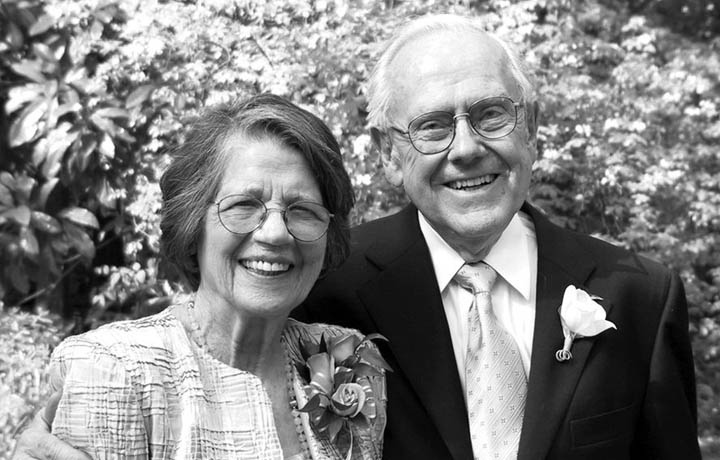Article
The business case for physician capability
By Jessica Sweeney-Platt | October 6, 2017

Likely you would begin to feel emotionally exhausted, dispirited, and detached. In other words, you would be burned out.
This has serious implications not just for physicians but to the organization as a whole – it represents a real threat to the business.
Physician burnout is becoming all but epidemic in healthcare, with study after study indicating that an alarmingly high number of doctors experience the emotional exhaustion, depersonalization and sense of low personal accomplishment that define burnout.
Now, new data from more than 1,000 practicing physicians surveyed by athenahealth provides insight into the various dimensions and manifestations of burnout — and offers doctors, their managers and staffs a way forward to address burnout and protect their organizations.
A threat to the organization
Burnout is a complex condition. But one insight that emerges very clearly from our research, and that of others, is that physicians are not experiencing burnout because of their patient interactions. Rather, it is the rising tide of administrative demands from within and outside the organization that are making so many physicians feel disconnected.

In a 2016 survey of more than 17,000 physicians, conducted by the Physicians Foundation, 54 percent of doctors surveyed rated their morale as somewhat or very negative, and 49 percent of them said they either often or always felt burned out. Nearly half of all surveyed physicians would no longer recommend medicine to their own children as a career, and a third would not choose medicine again for themselves.
This ongoing situation represents a problem not just for physicians, but for their organizations. Our research shows that physicians who reported experiencing signs of burnout are more than 3 times as likely to say they are going to leave their organizations within 3 years — 20 percent as opposed to 9 percent of physicians who aren't experiencing burnout.
Given that a healthcare system spends an average of over $250,000 to recruit and onboard each new physician, this represents a substantial risk to the organization, in both financial and cultural terms.
Complicating the issue for healthcare managers: Burned out physicians may be hard to spot. Our research shows no difference in productivity, measured in RVUs per day, between those with symptoms of burnout and those without.
But there is evidence that physician burnout can negatively impact patient care. A 2008 study of 8,000 surgeons, conducted by the American College of Surgeons, found a strong correlation between the surgeon's level of burnout and self-reported major medical errors. So burned out physicians may be ticking time bombs within an organization, likely to leave or to negatively impact patient care.
Addressing physician burnout is a “must do" for healthcare organizations. It is critical for workforce stability, provider satisfaction, and patient care — and it's simply the right thing to do.
But for the long-term, a healthy workforce requires more than just the absence of burnout. We need a system that supports both physician well-being and organizational health, and we need a way to measure the effectiveness of that system.
Measuring workforce health and stability
athenahealth's research into the characteristics of high-performing service companies has surfaced a new metric for workforce health: self-perceived capability.
“Capability," a term derived from research into service organizations and now validated by athenahealth for use in healthcare, is a measure of how effectively the organization supports the physician. Physicians with self-perceived capability agree that they have the tools, resources, information, and latitude to provide high-quality patient care.
And capability can be measured for both clinical and non-clinical staff. It represents how well the organization has designed jobs and systems to ensure that all team members have the tools to work at the top of their licenses.
We believe that building capability among physicians and staffs will address many of the controllable factors that contribute to burnout. And we think a focus on capability will promote a healthier, more sustainable workforce over the long term.

Our survey data bears this out. We found that those physicians with self-perceived capability were about half as likely to exhibit symptoms of burnout as doctors who did not perceive the same level of support from their organizations.
Capability also correlates strongly with other important performance metrics. Well-supported physicians are half as likely to want to leave their organizations within 3 years, and they are almost 15 percent more productive than physicians who do not perceive they are equipped for capability.
Building capability to promote workforce health
Beyond aiming to fix the burnout problem, capability represents an aspirational goal for healthcare organizations. It's an exciting concept. Building capability allows us to imagine a world where physicians and staff wake up energized to come to work in the morning, because they are surrounded by systems and people who enable them to focus on what they do best.
In an organization that emphasizes capability, team members have clearly defined roles and responsibilities. Leaders listen to the frontline and prioritize training, communication, and alignment. Innovation is prized and rewarded — especially innovation that results in fewer administrative tasks performed by physicians and other providers.
And in this new world, leaders have a new tool to guide decision making, evaluating each strategy and tactic in terms of its impact on the overall capability of their organizations.
Jessica Sweeney-Platt is executive director of research at athenahealth.






